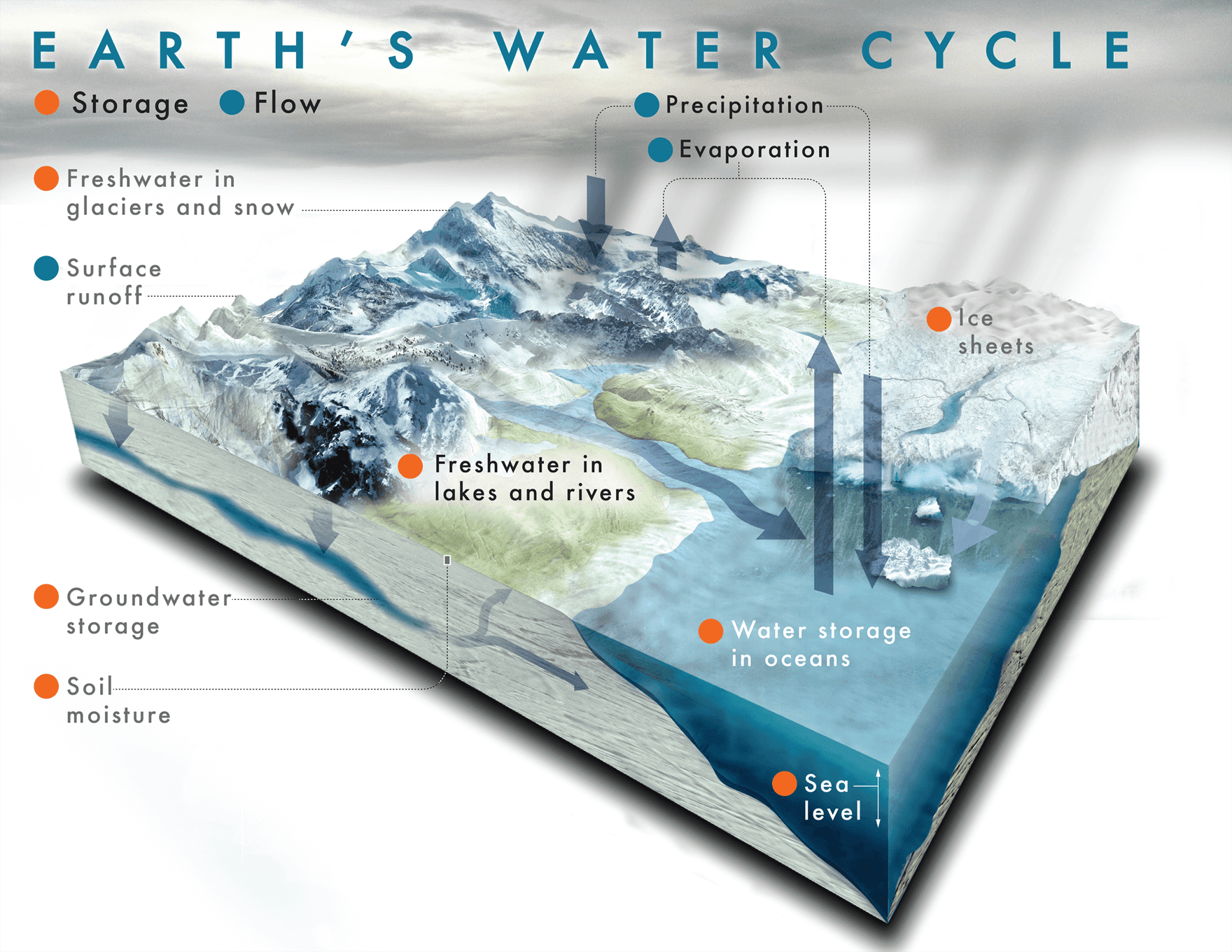AIM: TO LOOK AT THE WATER CYCLE AND HOW CLIMATE CHANGE IS AFFECTING IT.
Definition:

Scientific words:
- Evaporation. When water is heated by radiant energy it turns into water vapor.
- Transpiration. Evaporation from plants.
- Condensation. When water vapor cools, molecules join together and form clouds.
- Precipitation. When clouds get heavy the waters falls as rain, sleet, hail, or snow.
- Acidification: the action or process of making or becoming acidic.
We will be conducting an experiment that looks at the different ways that climate change is affecting the water cycle.


THE WATER CYCLE EXPERIMENT
.Bag 1: Normal Water cycle.
Bag 2: Water cycle with CO2 added: like Oceans in climate change.
Bag 3: Water cycle with ice added: like Antarctica in climate change.
Material:
- Water.
- 2 Bag.
- Food Colouring.
- Soda water.
- Litmus paper.
- Vivid.
- Sand.
Steps:
- Get vivid and the bag from the teacher.
- Draw the water cycle on the bag.
- Get 1 cup of water or soda water from the teacher and put it in the bag.
- 2 drops of food colouring into your bag.
- Hang the bag onto the window.
- In bag 2 I add litmus paper
Two Images:
Findings:
The Water Cycle: Bag 1
CO2 Water Cycle: Bag 2
Acid
Desert Water Cycle
Bag 3
Does it cycle?
Yes Yes Yes
Amount of Water
2 2 2
Acidity
1 3 1
Key: Water and acidity amount: 1 = none
2 = small
3 = large
The Water Cycle: Bag 1
|
CO2 Water Cycle: Bag 2
Acid
|
Desert Water Cycle
Bag 3
| |
Does it cycle?
| Yes | Yes | Yes |
Amount of Water
| 2 | 2 | 2 |
Acidity
| 1 | 3 | 1 |
Other comments:
1. Bag 1 cycled water.
2. Bag 1 had a small amount of water
3. The acidity in bag 1 was low.
4. Bag 2 also cycled water.
5. Bag 2 had a small amount of water.
6. The acidity in bag 2 had a la.rge amount of acidity
..
7. Bag 3 cycled water.
8. Bag 3 had a small amount of water.
9.The acidity in bag 3 was low
Conclusion:
Bag 1 cycled water in a normal way with a small amount of water with no acidity.
Bag 2 also cycled water in a normal way with a little amount of water with a large acidity.
Bag 3 ALSO cycled water in a normal way with a very amount of water with no acidity.
Draw a labelled diagram of the Water Cycle
Water cycle words:
- Precipitation
- Hurricanes
- Acid rain
- Evaporation
- Carbon Dioxide
- Water
- Defirestation
- Water vapour
- Transpiration
- Flooding
- Precipitation
- Hurricanes
- Acid rain
- Evaporation
- Carbon Dioxide
- Water
- Defirestation
- Water vapour
- Transpiration
- Flooding

Hi Alex you done a very very good job but you need to see if the work is done because I can see the work at the bottom part is not filled in.
ReplyDelete